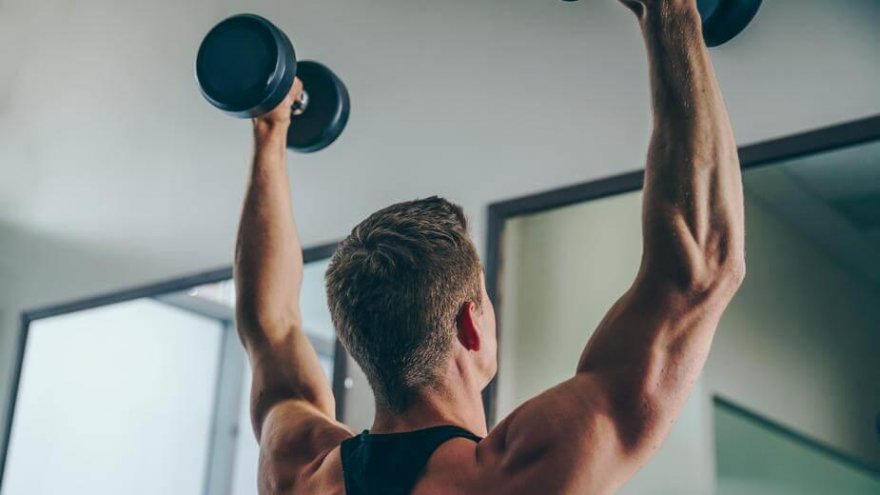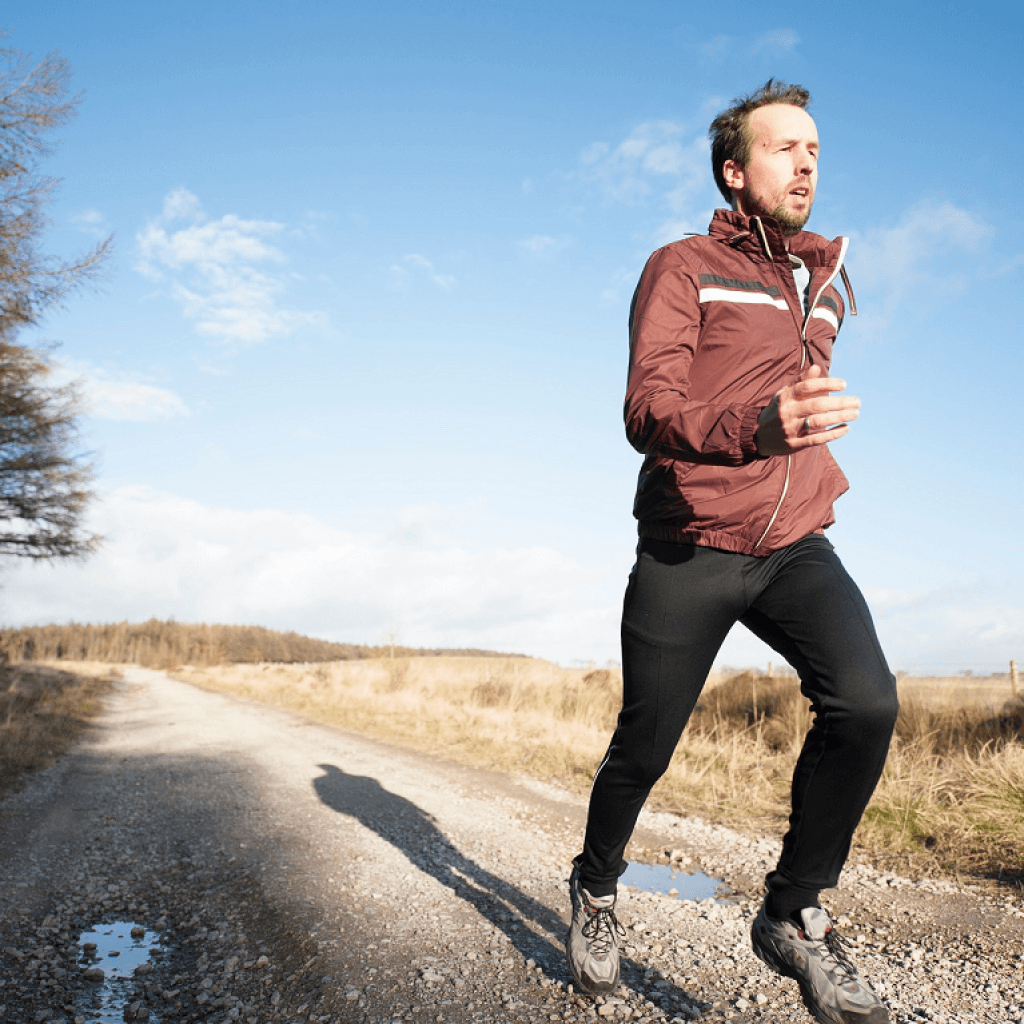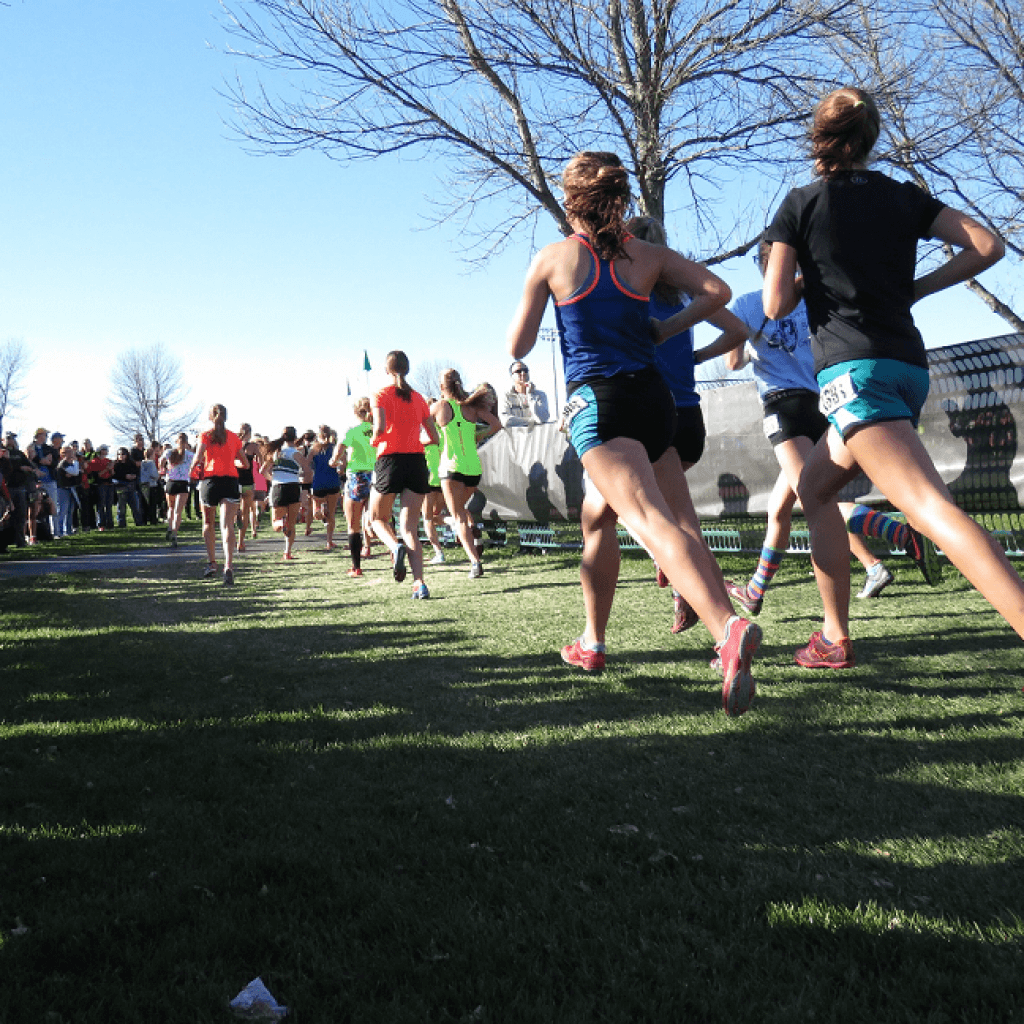Do Distance Runners Need Strong Arms?

Runners are notorious for skimping on upper body training. And with good reason, you might argue. Because what function do the arms really have in distance running apart from swinging back and forth? And besides, isn’t a bulky set of guns regarded as a disadvantage when it comes to clocking fast marathon times?
Is Running Really Only Driven by the Lower Body?
While there is no doubt that the major driving force in running is the lower extremities, the upper body and core also play a vital role. Because while running might look like a simple, straightforward motion, it actually comprises a series of forward, side-to-side and rotational movements. Movements in which many of our upper body muscles work in a manner different to the legs while running. So, instead of propelling forward motion, like the legs, parts of the upper body work hard to reduce wasted motion.

Like, for example, the torso. In running, it must provide a stable foundation to prevent excess rotation in the midsection. Similarly, the shoulders should remain in the correct position in order to maintain a rhythmic motion along with the legs. The shoulders should also have enough flexibility to allow unimpeded airflow through the expansion of the diaphragm.
And What About the Arms?
But what about the arms? What exactly is their function in running? Firstly, and most logically, they counterbalance the motion of the legs on the run. In other words, swinging the left arm to the front opposes the forward propulsion of the right leg, and so on.
Secondly, and specifically in distance running, the arms help us conserve energy. While it might seem, at first glance, that the motion of swinging the arms might require additional energy while running, a 2014 study published in the Journal of Experimental Biology found exactly the opposite. This small-scale study compared the energy consumption of four different arm actions or positions while running: Normal swinging, arms behind the back, arms across the chest and hands on the head. It went on to conclude that a normal arm swing consumes the least amount of energy of all these actions and positions. Notably, it required 13% less energy than the hands-on-head position.

Thirdly, the above study also found that swinging the arms in running also significantly reduces both shoulder and pelvis rotation. Which provides a hint as to why running without an arm swing is so energy expensive. Part of the additional energy cost of running without an arm swing is believed to go into rotating the torso more than usual in order to counterbalance the movement of the legs. This is a function that the swinging arms normally fulfill.
And then lastly, a quick note on an idea that is yet to be extensively tested. In gait rehabilitation studies, it has been found that individuals are often able to produce more force with their legs when they’re also using their opposite arms. In distance running, this may therefore be one way in which runners can indirectly help activate their legs when unable to directly do so. Like, for example, in the final miles of a marathon.
When Arms Matter Even More
And while, in distance running, it obviously pays to conserve energy by swinging the arms naturally and without much vigor, there is one scenario where a powerful arm swing can be extremely important. Yes, you’ve guessed it: The sprint. And in the case of the distance runner: The finishing sprint.

According to Andrew Kastor, head coach of the Asics Mammoth Track Club, arm movement can account for up to three percent of forward velocity during a sprint. Which is significantly more than the less than 0.5% it contributes in distance running. So, if you’re aiming for a PB, don’t forget to pump those arms as you power over the finish line.
How Does a Weak Upper Body Impact on Running?
From the above it’s clear that the torso and arms play an underrated, yet very important role in running. Which brings us to the next question: What if you have a weak upper body and arms? How will this impact your running? According to exercise physiologist and running coach, Janet Hamilton, a runner with a weak upper body often has strength imbalances that could lead to less efficient running. How? In very simplified terms, by being unable to uphold proper running form, thereby causing certain parts of the body to overcompensate and expend unnecessary energy in the process. And, over time, if left unaddressed, this overcompensation may even lead to niggles and injury. Bad news for all those who shun the weights room!

So Do Distance Runners Need Strong Arms?
In closing then, do distance runners need strong arms? Or, to put it differently, will stronger arms make you a better distance runner? Unfortunately the answer is not a straightforward one. Why? Because running depends on whole body interaction. Sure, you can bust out a few bicep curls, but if you’re not going to pay attention to your overall running form and body strength, it might not have the effect you desire.
So perhaps instead of isolating and strengthening only one or two muscle groups in the arms, a better approach would be a more holistic one. One that considers and appreciates how the entire body runs together as a unit. Why not enlist the help of a biokinetic practitioner to help you pinpoint your strengths and weaknesses as a runner? They could also help you see where improvements to your running form and the strengthening of specific muscle groups can potentially help you become a more efficient runner. Yes, it definitely isn’t a quick fix. But it’s an approach that is sure to be worth while in the long run.
Sources
- , Can strong arms make you a better runner?, Online publication
- , Upper body exercises that improve running form, Online publication
- , Do these 6 exercises to strengthen your upper body, Online publication
- , Top story, Online publication
- , Arm swing and running economy, Online publication
- , Introduction to running biomechanics, Online publication
- , The metabolic cost of human running: is swinging the arms worth it?, Scientific journal
Latest Articles
 Is Running on a Treadmill Easier Than Running Outside?Runners have their own preferences, whether it is treadmill running, running outside on the road, or exploring trails. So...
Is Running on a Treadmill Easier Than Running Outside?Runners have their own preferences, whether it is treadmill running, running outside on the road, or exploring trails. So... Is It OK to Use Trail Running Shoes on the Road?While trail running shoes can be used on roads, especially in situations where a runner encounters mixed terrains or pref...
Is It OK to Use Trail Running Shoes on the Road?While trail running shoes can be used on roads, especially in situations where a runner encounters mixed terrains or pref... How to Fix Sore Quads After Running?Rest, ice, gentle stretching, and over-the-counter pain relievers can help soothe sore quads after running. Also, ensure ...
How to Fix Sore Quads After Running?Rest, ice, gentle stretching, and over-the-counter pain relievers can help soothe sore quads after running. Also, ensure ... 10 Fruits With The Most Electrolytes to Replace Sports DrinksThese fruits are high in electrolytes such as potassium, magnesium, and calcium, essential for hydration, muscle function...
10 Fruits With The Most Electrolytes to Replace Sports DrinksThese fruits are high in electrolytes such as potassium, magnesium, and calcium, essential for hydration, muscle function...

